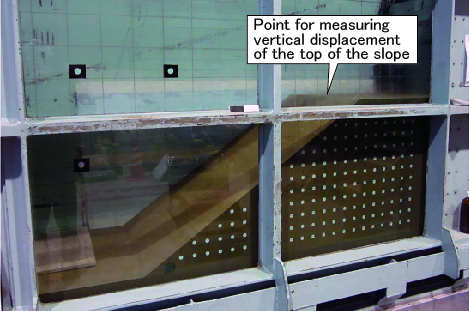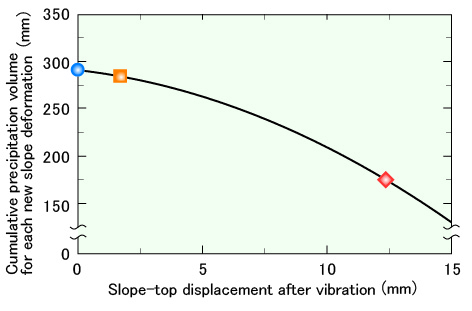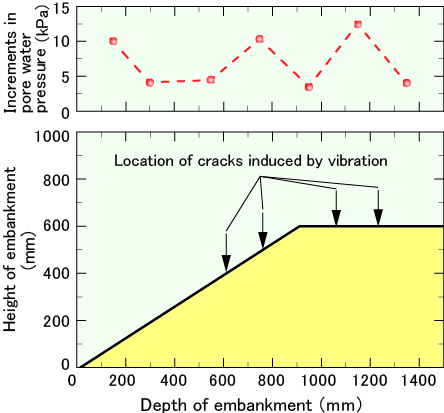5. Clarification of mechanisms underlying seismic activity induced weakening of embankment resistance to rainfall
- The relationship was clarified between the scale of alteration in the state of embankments due to seismic activity and their resistance to rain fall.
- It is now possible to quantitatively assess the rain resistance of a real embankment using analytical modeling.
Today, in consideration of the hazard attached to lowered resistance of structures caused by large scale earthquakes, measures have been taken to temporarily lower regulatory values limiting operations during rainfall. The extent to which these regulatory values are lowered is based on experience. However, in order to be able to adjust these regulatory values even more appropriately, work was carried out to gain insight into the mechanisms which weaken the embankment's resistance to rainfall as a result of earthquakes, and to quantify the relationship between seismically induced deformation and structural resistance to rainfall.
Model embankment(Fig. 1)vibrations were applied to simulate an earthquake, producing 3patterns of vertical displacement in the slope top. These tests were each followed by sprinkler tests. The greater the vertical displacement of the slop top due to seismic motion, the less sprinkled water was required to cause additional vertical displacement (cracks and swelling-out of slope) (Fig. 2). In order to clarify the cause for this, pore water pressure in the embankment during the sprinkling tests was analysed in detail. The results of these analyses showed that the pore water pressure grew in areas adjacent to cracks which formed after the vibration (Fig. 3),which in turn destabilised the embankment. This gave clear indication that water infiltrating into cracks formed in an embankment as a result of seismic activity, played a major role in its destabilisation. Based on these findings, a seepage model was built to reproduce rising water levels in tests using the model embankment. This model made it possible to quantitatively evaluate the rain resistance of a real embankment.

Fig. 1 Picture of model embankment
Fig.2 Slope top displacement after vibration and cumulative precipitation volume when slope deformation occurs during rain fall

Fig 3 Increment distribution of pore water pressure
inside the model embankment